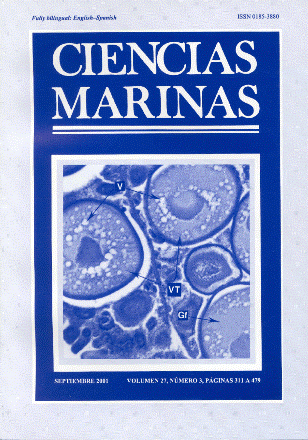Floating objects of the eastern pacific: types, spatial distribution and temporal changes
Main Article Content
Abstract
The spatial pattern was analyzed of different types of floating objects associated with the tuna fishery in the eastern tropical Pacific (ETP). Of the 34 types of floating objects, four classes were defined: floating objects of terrestrial origin (FOTE), floating objects of marine origin (FOMA), artificial floating objects (FOA), and fish aggregating devices (FAD). The information source was the observer database of the Inter-American Tropical Tuna Commission, for 1987 to 1997. The records of floating objects and fishery effort directed at them were analyzed, spatially and seasonally. The encounter rate and proportion per class were estimated, by one-degree quadrants. Spatial models were obtained for these variables using non-parametric regression. Before 1993, the encounter rates and proportion of FOTE were the most important, located close to the Central American coast. After that year, the region to the west of the Galapagos Islands was the most important. Since 1994, a spatial expansion of the floating objects fishery is observed to the southwest of the ETP, with the use of FAD. FOMA were found to concentrate in two zones: one off the coasts of Ecuador and Peru, and the other off Baja California, Mexico. The spatial patterns of the types of floating objects indicate a seasonal variation. It was concluded that the ETP can be divided into three zones: one coastal and two offshore zones. FOTE dominate in the coastal zone and to the north of the Equator, whereas FAD are the most important in the zone south of the Equator.
Downloads
Article Details
This is an open access article distributed under a Creative Commons Attribution 4.0 License, which allows you to share and adapt the work, as long as you give appropriate credit to the original author(s) and the source, provide a link to the Creative Commons license, and indicate if changes were made. Figures, tables and other elements in the article are included in the article’s CC BY 4.0 license, unless otherwise indicated. The journal title is protected by copyrights and not subject to this license. Full license deed can be viewed here.

